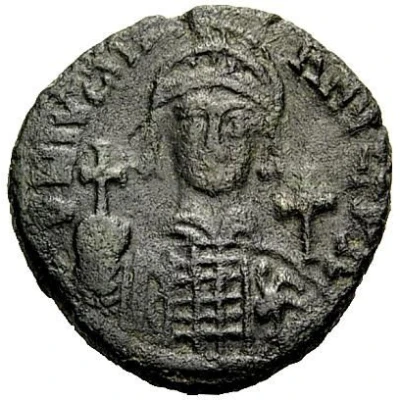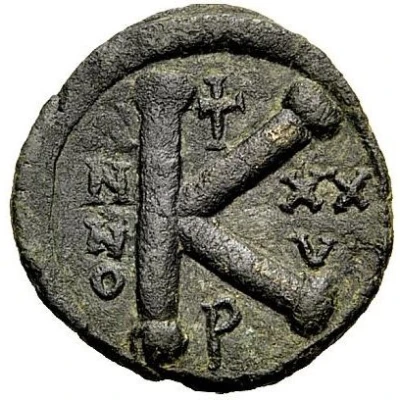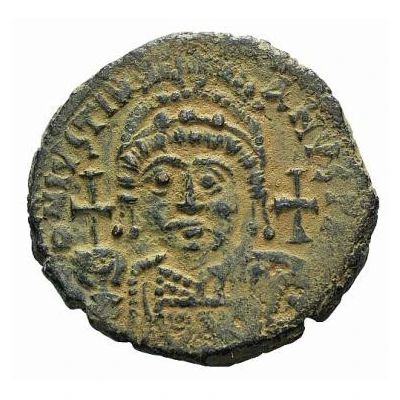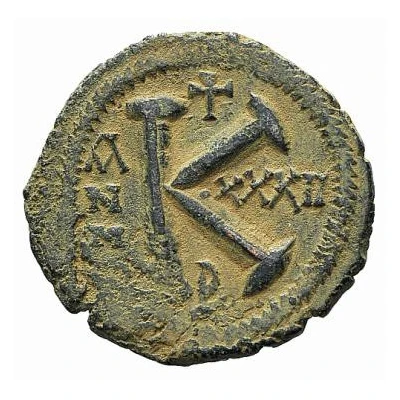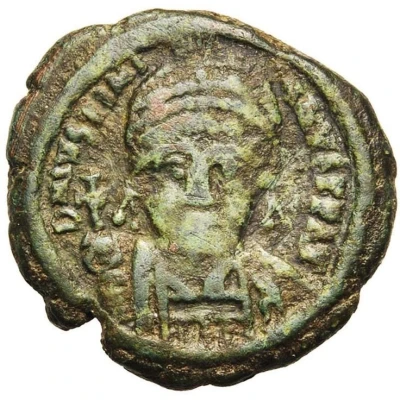
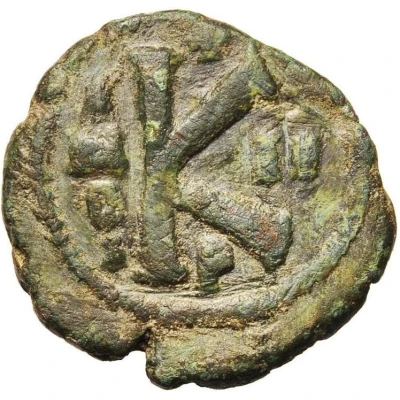

© Jean Elsen & ses Fils s.a.
20 Nummi - Justinian I Perugia; II ND
| Copper | 10 g | 25 mm |
| Issuer | Byzantine Empire (Byzantine states) |
|---|---|
| Emperor | Justinian I (527-565) |
| Type | Standard circulation coin |
| Years | 553-554 |
| Value | ½ Follis = 20 Nummi (1⁄360) |
| Currency | First Solidus Nomisma (498-720) |
| Composition | Copper |
| Weight | 10 g |
| Diameter | 25 mm |
| Shape | Round (irregular) |
| Technique | Hammered |
| Orientation | Variable alignment ↺ |
| Demonetized | Yes |
| Updated | 2024-10-04 |
| Numista | N#301273 |
|---|---|
| Rarity index | 100% |
Reverse
Large K between I/N/D/I and numerals representing the indictional year, cross above, P beneath.
Scripts: Greek, Latin
Lettering:
☩
K
INDI II
P
Translation:
K : "20" nummi (= ½ follis).
INDI II : "2nd indiction".
P : "Perugia".
Interesting fact
The Justinian I coin was issued during a time of significant economic and political change in the Byzantine Empire. The coinage reform of 538-541, which introduced the nummus, a new denomination of coin, was an attempt to address the empire's financial difficulties and stabilize the currency. The nummus was initially made of copper, but as inflation set in, the coin's value decreased, and it was eventually made of bronze. This coin, issued during the reign of Justinian I, is an example of the nummus coinage and represents an interesting piece of economic history.
